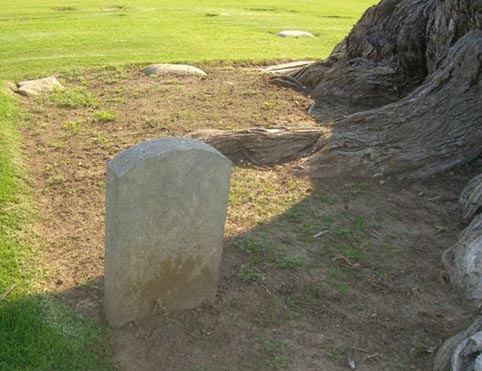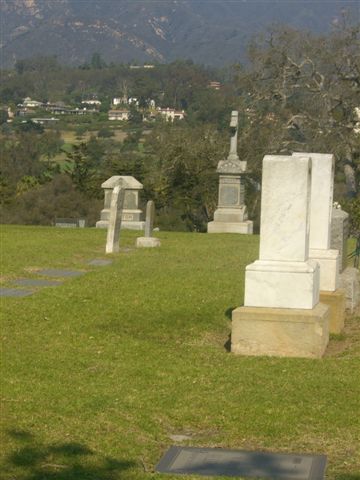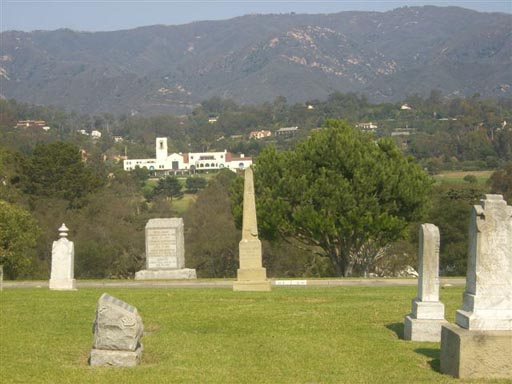Touring the Santa Barbara Cemetery
The Weird and the Dead
Cemeteries, as such, aren’t particularly weird. Every town has one; as David Petry, author of The Best Last Place: a History of the Santa Barbara Cemetery, told his cemetery tour group on Wednesday, “They’re the last great necessity.” In other words, with nothing certain in life besides death and taxes, CPAs and grave sites are possibly the next rank of priorities, right after liquor and coffee – or food and shelter, depending on your priorities.
Be that as it may, our cemetery, at least by daylight, isn’t a terrifically spooky place. In fact, it’s rather peaceful – a mood that’s carefully maintained by the staff. On the other hand, there’s weirdos in every group of people, and the dead are no exception. Despite the absence – seeming, at least – of zombies, vampires, or ghouls, there are some damn strange folks buried out in the Santa Barbara Cemetery.

One highlight of the tour was a chance to look at the urn of a man who, unlike most of us unsatisfied souls, managed to truly fulfill his destiny. I refer, of course, to Carbon Petroleum Dubbs, 1891-1962, named by his oil magnate father. Young Carbon Petroleum chose – wisely, I suspect, having also been to elementary school – to go by the shortened name C.P. Later in life, he invented a process through which oil could be extracted from shale, the Dubbs Process; he thereby earned his place in the history of chemistry, and justified his name. His father was, of course, thrilled by this accomplishment, and must have been equally pleased when C.P. chose to continue the family tradition and name his two daughters Methyl and Ethyl. There’s no record of how his wife felt about this, but she shares Carbon Petrolum’s urn in the strangely named Sanctuary of Life in the Santa Barbara Cemetery.
There are, of course, other and perhaps better known celebrities there, Ronald Coleman and Domino Harvey being among the most famous. But some of the more interesting stories revolve around those celebrities who were almost buried at the Santa Barbara Cemetery, rather than those who actually were. Any political history buffs will surely recall how the Shah of Iran was deposed in favor of the Ayatollah Khomeini the Shah’s family nearly ended up here, in our home town. In 1979, the Shah’s sister wrote to the board of directors of the cemetery, proposing to buy space for a family mausoleum. Her request was refused, based on the board’s fears that such an eminent occupant would draw crowds not desired by the directorship.

Eleven years later, in 1990, she tried again – and this time, said that she was sure there would be no problem with the project, as her family commanded unlimited funds. However, much to her dismay, the board ruled against her again, despite her wealth, as part of her proposed monument included a pair of 16-foot-tall gold dogs, guarding the entrance. In a moment of good sense and taste, the board made their decision based on the needs of the living, rather than the dead they felt that no matter how much the Shah’s family needed enormous gilded hounds to properly mark their burying place, no consideration could justify inflicting such a thing on anyone with functioning retinas.
Not that there aren’t a fair number of large monuments, but they’re generally quite tasteful and along less opulent lines. The Durea family mausoleum, however, despite its quiet architecture, is rumored to have been used as a site for the placement of a lantern to guide rum-runners during Prohibition. And we’ve all seen the pyramid, perhaps the most striking and memorable structure on the grounds.

Of course, it’s not what’s on the grounds, but what’s in the ground that makes a cemetery such an eerie place. One thing that I hadn’t realized, before taking Petry’s tour, is that there are a surprising number of remains that don’t stay where they’re originally put. Digging up a grave is so taboo that one would think it would almost never happen. Nevertheless, it happens a great deal, especially in cases where transients or foreigners were buried, and then found and taken to their appropriate place of rest. Between 1917 and 1943, over 400 bodies of Chinese nationals were dug up and taken back to China to be buried in their ancestral plots. The rise of Communism in China put a stop to this, as the new government forbade the practice.
Needless to say, the digging up of corpses in the cemetery is generally discouraged, even on Halloween. For some less illegal Halloween fun, David Petry is giving three more tours, on Sunday, October 28 at 10 a.m. and 1 p.m, and on Halloween, October 31, at 10 a.m. For reservations, email Kundra Starr.
And, of course, Happy Halloween from Weird Santa Barbara!



